WBAI’s 1959 format got me to thinking. Maybe I could do something similar on WNCN. After all, I still had some jazz LPs from those days at WFLN and WOND, and I’d find a way to get classical music LPs, perhaps starting with some from the New York Public Library, since it appeared that WNCN had none of its own.
Since I was at WNCN for six hours overnight, I wondered if Dave Passell or someone else in the management could be convinced to let me host my own show for the same amount of money I was already being paid. And if the program included classical music, that would fit right in with what the station already featured. As for the other elements, maybe they’d go for that, too, even if it seemed unusual. Perhaps it would even attract attention to the station. Plus, I’d make clear that I’d hosted jazz programs before on WHAT and WOND, remaining silent about WFLN.
Mulling it over more, tying selections into some kind of actual program idea seemed an even more special idea. Limiting everything to the 20th century, for example, sounded good, maybe adding to the classics some poetry recordings, film scores, musicals—things about which I already knew something.
As it turned out, surprisingly, Dave sounded interested. He said he’d talk it over with Fred Cain, the general manager.
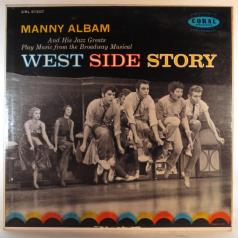
Excited, I began to plan how to present the different elements, for example, pairing symphonic music by Leonard Bernstein with selections from West Side Story and Manny Albam’s jazz arrangements of the same scores, plus Moss Hart reading part of his autobiographical theatre reminiscences Act One. Or Laurence Olivier reading scenes from his movie version of Shakespeare’s Henry V on a 10-inch LP which I treasured. Plus, it had some of William Walton’s great music for the film that I could also program. Then maybe something by Vaughan Williams and other English composers and LPs by English jazz musicians. Of course, I didn’t have most of the LPs yet to do all of that, but I’d find a way to acquire them.
When Dave and I met with Fred Cain, Cain seemed interested. “But what will you use for records?” Fred asked. “We don’t have any.” I suggested that I could borrow some, on my own time, from the Public Library and that, also on my own time, I’d contact record companies to see what they could send me and the station. Most major labels had headquarters in New York.
Fred went for it. Especially because it would mean that WNCN would start having its own LPs.
Naturally there first had to be some changes up there on The Pierre’s 40th floor. Dave moved the console and the board away from the transmitter room and its air compressor and put all of it onto the desk in the front room. There he set up two new turntables and a good microphone facing away from the other room. He also put some sound-proofing strips around the door between the rooms. Sitting there in my new studio, I could barely hear the air compressor.
Consequently, in late April 1959 WNCN had its first live broadcasts. From high atop The Pierre. Sounds of the 20th Century. I was 24 years old.
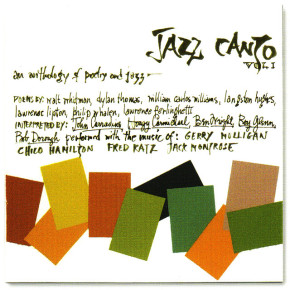
I used my own records for the first program. They included Stravinsky’s Petrouchka, conducted by Leopold Stokowski, as well as Stravinsky’s The Rite of Spring, conducted by Pierre Monteux, both among my favorites for years. Plus Bill Russo’s somewhat Stravinsky-like ballet, The World of Alcina, followed by the Stan Kenton Orchestra playing Russo arrangements, then Kenton alumni as members of Shorty Rogers and His Giants, plus a jazz and poetry record featuring West Coast musicians.
That’s when I discovered a problem.
The turntables sitting there on the desk. This was not a WFLN or WBAI high class set-up. When I opened a drawer in that desk, it made the tone arms shake; they had no padding or cushions. Although I had always taken good care of my LPs and they were unscratched, there were slight interruptions in the music when the tone arms wobbled. At first, when that happened, I quickly faded down what I was playing and set the tone arm back to the right place. That took only a couple of seconds, but still the flow of the music was interrupted. After a couple of times, I figured out that I should just leave the drawers open. Duh.
Was I nervous? Probably. But I also realized that, most likely, few people were listening that night, since I had appeared from nowhere out of the darkness. Or maybe they’d be so drowsy that they might not notice anything that went wrong. Oh, yeah, that was a city of eight million people. Maybe somebody was listening to my New York debut. I never found out if anyone did.
Another problem emerged when borrowing LPs from the Library. Some had not been taken care of. They were scratched. Or dirty. I went to Sam Goody’s and bought some cleaning brushes and cloths. My expense, of course. That helped some.
Quickly the whole project became a passionate obsession. I slept hardly at all those first few months, calling and/or visiting the offices of every record company in town. A great place to do it, New York.
I collected for the station and for my program post-1900 music by Puccini and Mahler, plus works by Rachmaninoff, Debussy, Ravel, Prokofiev, Shostakovich, Sibelius, and more. I kept for myself the more obscure and modern works, knowing that WNCN would never broadcast such things anymore than would have WFLN; that’d be too risky for most classical music stations, alienating conservative audiences. Sure, it would be all right for my program; it was overnight, quirky time in New York.
That’s also when I discovered Composers Recordings, Inc.,which featured nothing but the work of modern American composers. They gave me everything they’d published.
And I began collecting jazz from Blue Note, Columbia, RCA, EmArcy; comedy records by Mort Sahl, Bob Newhart, former colleague Mike Nichols; film music by Rosza, Tiomkin, Korngold.
I borrowed Library LPs of poets reading their own works. One of them was Dylan Thomas on a Caedmon Record. Fred called me into the office about that. Caedmon had called him about, he said, a “Die LANN Thomas” recording and that it was copyrighted. We got a warning but no fine. That’s when I also discovered Spoken Arts Records, which specialized in exactly what the name indicates. Contacting them, I soon had what I requested, including LPs by Ruth Draper, following in Mike Nichols’s footsteps after all.
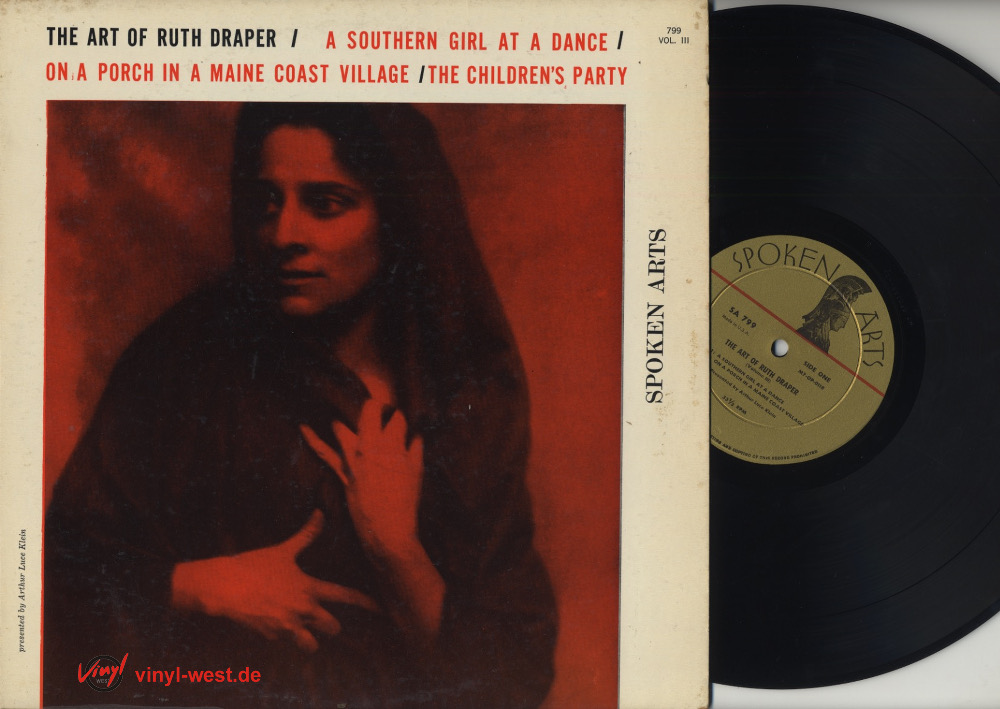
By the way, in the late 1970s, my second wife Helga and I became friendly with Spoken Arts founder Arthur Luce Klein and his wife, also named Luce. Helga worked for Luce in her antique shop in New Rochelle. Arthur eventually toured schools reading from famed books as The Storyteller.
I needed more record shelves at home, although much of what I collected started the WNCN library.
Meanwhile, domestic life went awry. Vene was working at Cosmopolitan Magazine as assistant to the fiction editor, and we were only seeing each other for dinner, after which I usually had to take a nap because I’d been up much of the day, planning and working on creating the show. But sometimes we’d find a way to go to the theatre, after which I’d hurry home to get ready for my show, packing a lunch.
Those six hours overnight became my life. My joy.
Listener reaction? I don’t remember getting letters so long as the broadcasts came from the Hotel. Letters and phone calls would have gone to the office; that was the station’s official address. And the phone at the transmitter had a different, unlisted number.
WNCN may not have been on most people’s radars yet; they’d have to stumble on it just as I had done. Sure, I was offering something original and different. But modern classical music, jazz, poetry, etc. were hardly mainstream radio and probably WBAI had already cornered such an audience.
Actually I hadn’t done or said anything to encourage people to contact me. I wanted to do the show my way, not play requests. And not talk on the phone so as to concentrate on what I was doing. I was following Jean Shepherd’s example on WOR whom I’d heard remind listeners not to call. “I’m at work,” he’d explained. Moreover I wanted to listen to all those wonderful recordings.
But I did get a letter from a magazine writer who wanted to interview me. Roy Hemming of monthly Music Life was working on a feature about New York all-night classical music broadcasts for the October issue. And he’d heard my program.
I was thrilled. It meant somebody actually knew what I was doing, doing it my own way, and liked it. And maybe such publicity would attract a bigger audience. It wasn’t so much that I wanted people to pay attention to me; I wanted to get people to like what I liked, to share the enjoyment, as I had with my jazz shows in Philadelphia and Atlantic City.
Hemming came to our tiny Riverside Drive apartment where we offered him coffee and cookies. Still a couple of naïve kids. He knew a lot about the program and said he enjoyed listening.
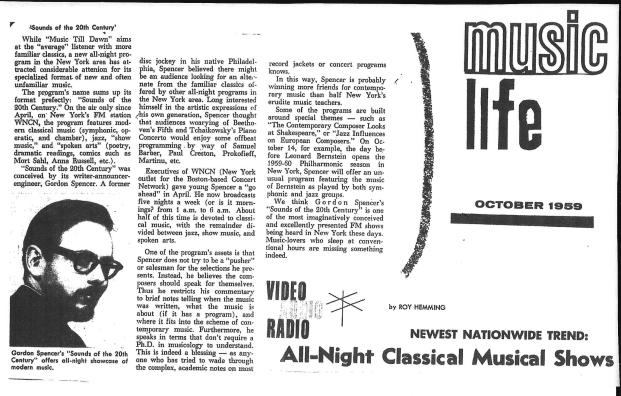
“We think Gordon Spencer’s Sounds of the 20th Century is one of the most imaginatively conceived and presented FM shows being heard in New York these days,” he wrote.
It was the only time and place that I knew of serious public attention that year.
Meanwhile, WNCN had moved to One Park Avenue. By the end of 1959, Dave had created a real studio there with a professional-looking board, cushioned turntables, good microphones, and several tape decks. Next to it was a glass-windowed room with the large tape decks brought down from The Pierre, and all the big tapes were on orderly metal shelves. The rest of the jumble of equipment remained at the transmitter.
The rapidly filling record library, now that record company promotion people began to take us seriously, was several long corridors away on the same floor at the business office. The rooms were rented from Ziff Davis Publishing that owned one whole floor.
When I told Dad that we’d moved to One Park Avenue he thought that I’d really come up in the world, rather than down, as from up on Fifth Avenue at The Pierre. One Park Avenue is where Park Avenue narrows at 32nd Street, merging into utilitarian Park Avenue South, a business district.
At night I had the whole floor to myself and, when airing a long piece of classical music, I’d wander into the dark Ziff Davis offices, switch on a few lights and look through pictures, or borrow magazines to return the same night. Being alone in those hushed, vast rooms or walking along dim corridors could feel a little spooky. Once or twice I was actually startled, coming across lumpy, grey Eastern European cleaning ladies putting away their buckets and mops, their gold teeth glinting in the shadows.
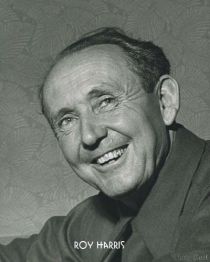
By then I was broadcasting a few interviews with musicians, taping them in the room next to the control room or talking to them on my own portable 7-inch Revox reel-to reel recorder. That’s when I talked to Roy Harris, actually my uncle’s brother-in-law. (My uncle, Julian Kahn, indicative of so much of my family, was also a musician, playing cello in Hollywood movie studio orchestras.)
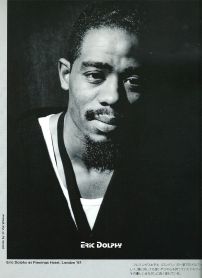
Other interviews: Morton Gould, Vincent Persichetti, and Cannonball Adderley. When Cannon and I met he came along with a young saxophonist/clarinetist of whom I’d never heard, Eric Dolphy, a member of the Chico Hamilton Quintet. Since Dolphy was there, I decided to do him a favor and interview him; at least that’s how it now sounds on the tape. The soft-spoken, unassuming man, in the course of my questions, told me he liked the music of Stockhausen and Schoenberg, music I’d never program, not liking or understanding it.
There I was again, getting jazz musicians to talk about classical music. Adderley said he liked the work of Honegger, by the way.
Then there was Moondog. I had come across a few of the records of this tall, blind street musician while at WOND, finding his sound unique and fascinating, as fascinating as the photos on the record jackets, with his strange clothes and biblical prophet look. I had learned that he liked to spend much time on New York streets, especially on Sixth Avenue near the main offices of CBS and around the corner from NBC at Rockefeller Center.
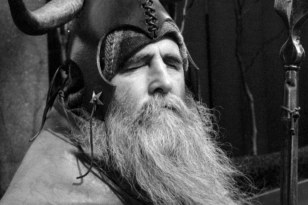
I went to find him, saying I’d like record an interview for broadcast. He readily agreed, inviting me to his apartment on West 44th Street off Broadway. It was a tiny two-room space in a dingy walk-up hotel. But then, he couldn’t see the dinginess, could he? We spoke again several times on the street, and I featured his music and the interviews during my second stint at NCN in the late ’60s as well as in 1970 on WBAI.
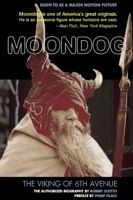
That broadcast can be heard online as Moondog—The Man on the Street https://archive.org/details/AM_1971_07_03.
Early this century, Robert Scotto was writing a book about Moondog and tracked me down to ask me for copies of the interview as well as about what I remembered of our mutual encounters. Moondog had told him to get in touch with me. Astonishing. More than 30 years had elapsed since my last contact with Moondog.
Then the Concert Network bought its own building on East 47th Street just off Fifth Avenue and started daytime live programming. Why? And why the earlier move to One Park Avenue? No idea. Probably I didn’t ask anyone. Perhaps Concert Network President T. Mitchell Hastings thought it was time for the Network to have a more noticeable New York presence.
I’d met him a couple of times, probably not intimidated, probably indifferent, as if my on-air talent was so irreplaceable that we were some kind of equals.
But you have to consider that my programming may have been making a difference. Maybe that’s why Hastings had decided to give NCN a bigger presence in New York, first at One Park and then with its own building. Certainly I’d put it on the map somehow. Moreover, its initial record library was due to me.
Had I made a public impression for the station? I don’t know. Perhaps nobody in management wanted me to realize that and then ask for a raise, thinking myself significant. I was so wrapped up in what I was doing, loving it, and still so young that I never thought about that and never asked. You have to wonder why I didn’t ask more questions.
For this incarnation of WNCN, Joe Marzano came down from Boston to host programs. Which was fine by him; his family home was on Long Island. Station Manager Cal Miller hosted programs. So did Johnny Lang.
WNCN was making some money with brokered programs just as had WHAT with Sunday morning gospel shows when hosts aired commercials for restaurants, hair dressers, clothing stores, etc. for which they got paid and could defray costs of buying air time and/or profit.
One WNCN feature was Lunch with Casper Citron; he interviewed celebrities and footed the bill. Another was Music and Opportunity with Bernard Haldane. That zingy-titled show featured Haldane’s classical music choices paired with talking about his firm’s professional job counseling. Another program presented ruminations by members of the Theosophical Society.
Plus, a d.j. who seemed younger than I bought himself two hours once a week to play mainstream pop music, on which WNEW was thriving. A little unusual, since rock and roll was more and more becoming the trend. (Eventually, he’d actually become a star on WNEW which stuck with that kind of pop music.) He’d talk about the songs in a friendly, casual way, often digressing into personal musings, Jean Shepherd-like, except not doing it with equal specialness. He had an unconventional name, considering that most program hosts were disguising ethnicity. He was Jonathan Schwartz, the son of famed Broadway and movie song-writer Arthur Schwartz.
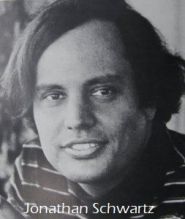
His show came on at midnight, when mine had been starting. And I had to be present; he didn’t know how to run the equipment; he just knew how to talk. So I had to be his engineer. While he sat a glass window away from the control room, he’d watch me for reactions to his comments, thinking me fascinated, of course, when all the time I was actually pissed-off that he could pay to preempt me. Still the actor, though, I sometimes faked a grin and a smile. Once I walked out of his view while he was talking on the air. He yelled, “Gordon! Where are you?” as if fearing he’d lost control. Or maybe he was angry that I didn’t seem to be hanging on his every word.
Clearly, you can see that WNCN was not exactly a traditional classical music station. Look at what I had been doing.
Then Jonathan himself was preempted. And so were two of my regular overnight hours. A new four-hour, daily jazz package took over from 10 p.m. to 2 a.m., likewise financed by the producers. They called themselves Communicating Arts Corporation. Tom Wilson and DeDe Daniels, executives at United Artists Records, were up front.
UA had been producing some great jazz records then. Coincidentally, one featured Bill Potts’s arrangements of music from Porgy and Bess, one of several spin-offs of the current movie, starring Sidney Poitier and Dorothy Dandridge. (Miles Davis and Gil Evans recorded another.) In the movie Crown was played and sung by Brock Peters. He was DeDe’s husband.
On the air was quite a line-up of alternating commentators/hosts, some of the biggest names in jazz criticism: Nat Hentoff, Ira Gitler, and Martin Williams.
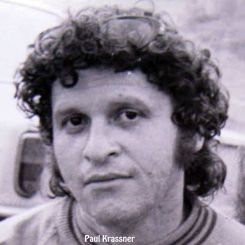
Jazz humorist Ed Sherman was there as “George Crater.” (His pseudonym was a goofy spin on the name of Judge Crater who’d become famous by mysteriously disappearing after a jolly night in town. Despite lots of newspaper coverage he was never found, and his story and that of murdered people connected to him make for fascinating reading.) Ed provided lots of funny bits on the air, often dealing with jazz musicians. And more biting commentary—social, satirical—came from Paul Krassner, who’d recently started a newsprint magazine, The Realist, which gained fame as a counter-culture gem for about 10 years. Krassner and I would encounter each other, in passing, during the late ’60s at WBAI.
Meanwhile, two d.j.s anchored, hosting most of the playing of records that made up the bulk of the programming: Les Davis and Sid Shepherd. Except that Shepherd had changed his name to Chris Borgen, which, he told me, was actually his wife’s name. Later, Chris would become a CBS news reporter. Les would keep on being a jazz d.j. The fact that I knew a lot about jazz was irrelevant as far as those producers were concerned.
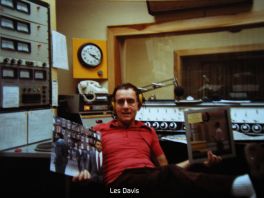
I was always around, on duty, waiting my turn to follow the moneyed guys, in my dwindled niche, to hear Chris sounding slick and smooth, more like a pop d.j. than the intelligent informative person I believed myself to be. On the air, he spoke of songwriter Frank Loesser as “Frank Lohser” and referred to Phineas Newborn, Jr.’s take on Avery Parrish’s 1940 bluesy “After Hours” as “traditional jazz.” My superiority felt confirmed. I had sometimes broadcast real traditional jazz, New Orleans style, early in the morning, around 5 a.m.
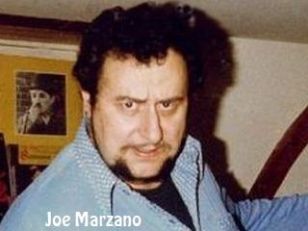
Meanwhile, Joe Marzano and I became friends, both harboring sardonic views of society. Together we’d record ad-lib comedy bits while in the recording studio during my shift when a long record was on. Then I’d broadcast them overnight. We did a send-up of Casper Citron’s show, The Horace Hepple Lunch, in which I, as a nasal-voiced take on Citron, interviewed Joe as “Sal A. Pepe” (Italian: Salt and Pepper), a gravelly-voiced Noo Yawker who sold frozen pizzas to be eaten frozen on sticks, like popsicles. The major bit was talking with our mouths full and asking each other to pass things like napkins and glasses of water or commenting on the bread and butter, making sure to crunch our food loudly. No burps, though. We had taste.